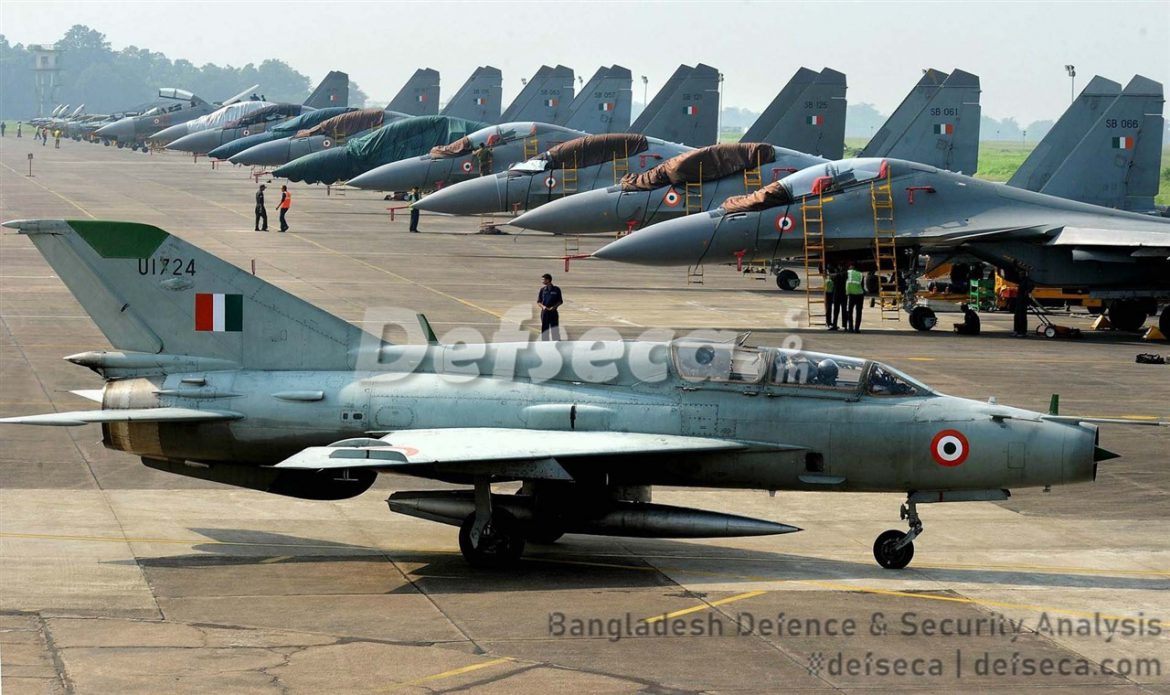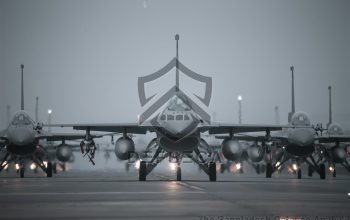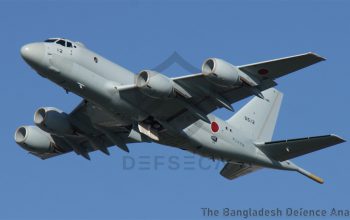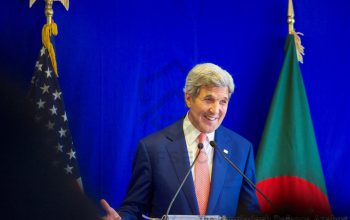Defence and security cooperation between Bangladesh and India took off well before Bangladesh became an independent nation in 1971.
India assisted in liberating Bangladesh from the Pakistani occupation forces.
After the war Indian armed forces continued to maintain a presence in Bangladesh until Sheikh Mujibur Rahman successfully evicted them from the newly independent country on 17 March 1972.
India also supported a parallel force named the Jatiya Rakhhi Bahini (JRB) (Translation: National Security Force), which took over important internal security roles after the Indian Army left Bangladesh. The force was trained by Major General Sujan Singh Uban from Research and Analysis Wing (RAW). Interestingly the Indian officer himself was a recruit of the American CIA since the 1960s.
Moreover the Indian Army maintained a presence at Savar Cantonment through Major Bala Reddy as well as Junior Commissioned Officers (JCO) for training the JRB.
There was a plan to merge the JRB with the mainstream security force such as the Bangladesh Rifles (BDR). The move was vehemently opposed by members of the BDR resulting in a mutiny. The plan was dropped thereafter.
As a state paramilitary force the JRB was responsible for thousands of deaths and abductions. It was distrusted by the Bangladesh armed forces as a pro-Indian force.
This was so for several reasons. Most of the members of the armed forces who fought during the War of Independence strongly believed that the Indian Army just walked in at the end of Bangladesh Liberation War thereby robbing the Bangladesh military of the “glory of liberating their motherland.”
Many senior military officers believed that the government-in-exile at Mujibnagar signed a secret treaty with the Indian government, compromising the sovereignty of Bangladesh and that Sheikh Mujib became less interested in the development of the defence forces because of that treaty.
However these secret machinations by India did not hold up because in later years the Bangladesh armed forces started receiving more sophisticated hardware from the USSR and United Kingdom.
Senior army personnel felt that the Jatiya Rakkhi Bahini was planned and designed by the Indian Army for the safety of the Awami League regime. The poorly-equipped defence services at the time were also bitter about the fact that the Indian Army took away all the sophisticated weapons left by the Pakistan Army.
When Sheikh Mujibur Rahman was killed on 15 August 1975 by members of the Bangladesh Army, the Rakkhi Bahini, which was very loyal to him, was very inactive. It raises the question about the force’s connection with Major General Uban, who was a double agent of RAW and CIA.
After the death of Sheikh Mujib most of the JRB members fled their camps and homes fearing reprisals from the Bangladeshi people. They were however absorbed in to the Bangladesh Army through an official act in 1975.
India got busy with destabilising Bangladesh once again with renewed vigour. They provided support and shelter to the members of the Shanti Bahini terrorist outfit. Members of the Shanti Bahini terrorist organisation were trained in Chakrata, India. They were responsible for the deaths of thousands of Bengali and tribal Bangladeshis but ultimately surrendered their arms under a peace treaty signed with the Bangladesh government in 1997.
Successive military regimes in Bangladesh realised India wanted to dominate Bangladesh in all spheres, particularly its security apparatus. A foreign policy to counter India’s negative designs were formulated to ensure Bangladesh’s interests were upheld during those troubled times.
Since 2007-2008 Indians regained their opportunity to deepen security cooperation with Bangladesh after a dynamic political shift.
Bangladesh Army changed its war gaming model, where India was no longer portrayed as the enemy in a direct manner.
In 2017 the Indian government offered a $500 million line of credit to Bangladesh for purchasing Indian made military hardware.
By 2018 India sought out a defence agreement with Bangladesh similar to the ones it maintains with satellites such as Bhutan however Bangladesh government would not do so. Instead a less effective Memorandum of Understanding (MoU) was signed.
The framework includes provisions for joint training exercises, exchanges of visits by high level defence officials, technical cooperation in shipbuilding sector as well as space and importantly resolve disputes through dialogue.
At the same time India was busy arming Myanmar, which led a brutal cleansing operation against its own Muslim minorities forcing close to a million of them to seek shelter in Bangladesh.
India provided sophisticated sensors for Myanmar Navy warships, maritime patrol aircraft, helicopters, anti-tank weapons, a second hand Kilo class submarine, refurbished tanks and artillery guns.
These actions reinforced the belief in Bangladesh that India cannot be trusted as a strategic partner. The time tested belief in amongst Bangladesh’s armed service personnel held true with India increasingly becoming anti-Bangladeshi with several laws targeting their own Muslim minorities, especially Bengali Muslims in an effort to drive them in to Bangladesh.
India tried to establish a coastal radar system in Bangladesh for the Coast Guard. The move was opposed strongly by the Bangladesh Navy as they noted it would hamper Bangladesh’s national security and operational secrecy of the military. The radar package was quietly dumped.
The Indian Navy also offered to train Bangladesh Navy submariners as a reactionary move after the Bangladesh Navy purchased two submarines from China. India itself has no operational experience in operating Chinese submarines so there was never any question of entertaining the outlandish offer.
To this day Bangladesh armed forces have not taken up the offer from India to purchase $500 million worth of Indian military hardware. India also provisioned Bangladesh Air Force to utilise those funds to purchase the MiG-35 multi-role combat aircraft from Russia. Since then coincidently the purchase of Russian fighter aircraft were dropped by the Bangladesh Air Force also.
In 2020 there were no records of Bangladesh armed forces having procured any Indian made military hardware.
The poor quality of Indian products also meant they would never pass stringent scientific process of Bangladesh military’s Directorate General Defence Purchase (DGDP).
Besides it would be illogical for the Bangladesh armed forces to procure equipment from a country it believes is a major security threat.
There is also no doubt that China’s deep strategic relations with Bangladesh security apparatus has had a distinct role. Today much of the Bangladesh military’s hardware is imported from China and the European Union states.
In June 2020 Chinese and Indian armies clashed on the Kashmir frontier. It resulted in a large casualty inflicted on the Indian Army. Bangladesh did not officially draw itself in to the incident but indications from Dhaka illustrate it would not side with India in the event of an armed conflict between Indian and Chinese military forces.
With India making its position clear by arming Myanmar and taking several key steps that hurt Bangladesh’s national interest it is unlikely that the Bangladesh armed forces will seek to deepen defence cooperation with India in the near future.
While the relationship between Bangladesh and India are complex it is simple enough for defence officers to see that India is the number one threat to Bangladesh’s security. Defence agreements as with any other agreements signed with India will badly undermine Bangladesh’s interests and sovereignty. This widespread perception cannot be ignored at a political level in Bangladesh either with any civilian led government mindful of the maintaining strong working ties with the military.
As a counter balance against the perceived Indian threat Bangladesh has been building its ties with friendly nations such as China, Turkey and the European Union. It has also taken significant steps to realise stronger ties with the United States on the condition that Bangladesh and United States maintain relations free of Indian influence as Dhaka was irked with Indian interference and inputs on several occasions in the past to misdirect American agencies regarding Bangladesh.
Overall Bangladesh may not wish to become a direct pronounced enemy of India but nor is it willing to abdicate its sovereignty to Indian designs.
India needs to carefully consider the history, Bangladesh’s rising success and popular perception about the “Indian brand” in the region before it takes future unilateral steps that might not be viewed kindly by Dhaka.
Good neighbouring relations in trade can still be maintained without need for strategic level relations. However interference on Bangladesh’s internal affairs and its strategic relations with other powers will not be tolerated by the masses including the armed forces, which are duty bound to protect Bangladesh’s independence at any cost.




